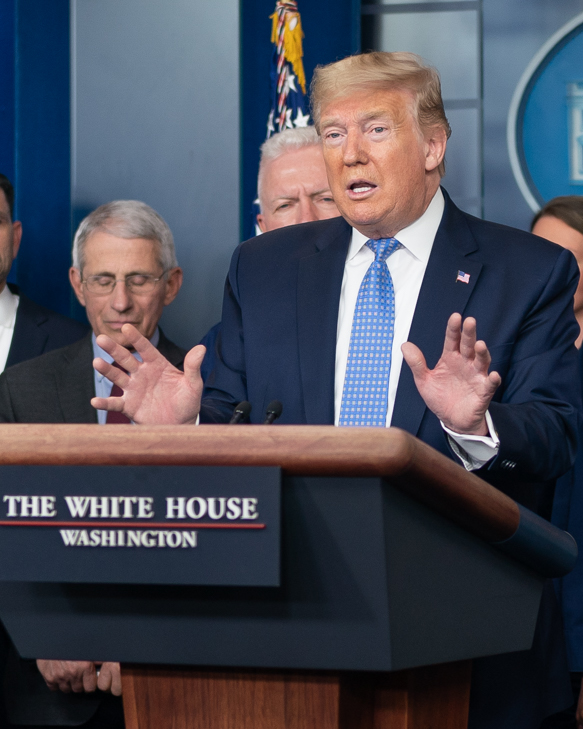
Since February of 2020, there have been three main topics dominating my thoughts: COVID-19, pricing, and my daughter, who was born the week Minnesota, where we live, went into shutdown. Two out of those three thought streams have interwoven in my mind, distilled down, and generalized as challenges related to development versus deployment and adoption.
COVID-19 has dominated the news for over a year now as I write this, there have been over 28 million confirmed cases and almost a half-million deaths from the virus. There are so many ways the pandemic has impacted our lives, finances, and jobs that it almost seems ridiculous to try and write anything novel about it. It would have been nice to close the book in 2020 and just push forward and move on. However, in spite of the development of some highly effective vaccines, there are many reasons we are still contending with the virus.

Globally, and especially within the scientific community, a highly charged response has been underway for over a year now. Recently, the CEO of Johnson & Johnson said we may be continuing to have to manage COVID-19 for years into the future, with booster shots that respond to viral mutations over time.
When I think about my work, I am struck by the similarities in human reactions over time to COVID and pricing strategy and pricing software implementations. So much so that I wonder if there aren’t some lessons about human nature we can observe.
Parallels with Pricing Strategy
In the first months, as the virus spread worldwide, there was some pushback that it either wasn’t a big deal, no worse than seasonal flu outbreaks. Or that it was a problem in other countries, but not in the US, so we could go about our regular lives. Imagine a CEO saying “we have some price variation, but it’s easily explainable and pretty standard for our industry.”

As February rolled, around the healthcare community started getting concerned that facilities would be overwhelmed with sick patients, that workers would be at risk and that those facilities would become transmission points. As a country, we lacked the requisite tools to respond to treat the symptoms of patients (ventilators, oxygen, et cetera) and PPE for healthcare workers.
Imagine here a product or pricing manager begging for better analytical tools and more staff to monitor the health of their “patient” (company) as market conditions change around them. Management responds that due to financial performance, no new headcount can be justified and capital spending needs to be clamped down to protect cash reserves.
By summer, much of the healthcare and essential workforce had been infected and congregational living facilities had seen extremely high infection rates among their communities, resulting in thousands of deaths among the elderly. Pricing strategy teams facing business downturns are among those who can anticipate their company layoffs first, as they watch Average Selling Prices fall, new customer acquisitions decline, and existing customer purchase volumes taper off. These vital signs of their patient aren’t looking good
First Efforts at Meeting the Challenge
At this point, the country was proposing all sorts of different responses to the pandemic regionally. Nationally, it was starting to hope to “science our way out” of the problem to minimize impacts of the financial health of the country and get back to business as usual as quickly as possible. Project Warp Speed was launched offering up governmental guarantees for vaccines to be purchased even if they didn’t get FDA approval so that even before vaccines cleared the trial, companies would begin manufacturing them on a massive scale.
This was an attempt to take tasks that are generally performed sequentially and parallel-track them – assuming that any waste was worth the risk, given the lives at stake. In the business world, you can imagine a number of commercial policies being implemented simultaneously in hopes that something sticks; new product launches, new price structures, promotional discounting, and expansions beyond a former target market.
Meanwhile, on the COVID front, folks still needed childcare, they had to go to work, and they faced increasing exposure levels in their daily lives regardless of the vaccine development process going on in the scientific community. Cities and the states started implementing mask ordinances, targeted shutdowns, stay-at-home orders, emergency funding, and eventually fiscal stimulus and emergency loans. Without a grand and immediate solution, we are forced to manage within the existing situation.
Pricing strategy projects often feel this way. You’ve finally got buy-in that the current state is unsustainable, but you can’t just flip a switch on people processes and tools and do things better. Key business stakeholders always need to manage their day jobs but also have a full-time task providing requirements and future roadmaps. Meanwhile, they are limping along with underpowered tools and manual processes in the hopes that better algorithms and strategic changes will eliminate manual work eventually and free them up in the future.
Overcoming Skepticism
Once the Pfizer and Johnson & Johnson vaccines made it through rapid trials (think User Acceptance testing) and emergency FDA approvals, they were ready for global rollout (go-live). As in pricing projects, where you’ve worked for months on something and convinced yourself the methodology and strategy are sound.
This is where I see the most universal-seeming human reaction to a large-scale change: Skepticism and doubt seem to ramp up. What are the side effects? For those involved in vaccine development, they believe it’s not only safe but will be hugely beneficial and save lives.
Project team members are tasked with driving tool adoption and sometimes are meet with waitlists of those anxious for new software, but also with the anti-vaxers of the business community who fear that the new cure may be worse than the disease.

In fairness to the skeptics among us, there are always examples of botched pricing strategy decisions, just as there’s science with poor experimental design or careless execution. Plenty of studies produce results that cannot be replicated. Scientific journals have established processes of peer review and mitigation measures to hold their practitioners to high standards, but business seems to overlook gate reviews and on-going monitoring processes as they move on to the next new project, often without critically evaluating past efforts.

We can hide behind the simultaneous factors changing in a business at any given moment as a reason pricing strategy or software implementations are hard to evaluate. But sometimes it’s possible to define success criteria on the front end and truly measure and attribute ROI.
For the COVID vaccines, we will eventually know how quickly the patchwork of healthcare institutions was able to administer them, how many people were convinced they were safe enough to take and how infection and hospitalization rates are impacted.
Like the vaccines, statistically optimized prices which are not applied don’t have a beneficial result. With price optimization, you can measure annual revenue X adoption % X scope % X lift % to get a fairly accurate estimation of the annual financial impact.
Leadership is Critical – in a Pandemic or Pricing Strategy
The skills, education, and personalities of those who develop the science side of things, and those who are most effective in driving adoption? These are generally not found in a single person. We are taught to specialize in either a development role or a deployment role and so a critical hand-off eventually has to occur. Perhaps a political leader (in the case of COVID) or an executive sponsor (in the case of pricing optimization) can function as a communication bridge in these instances; the rare leader with sufficient technical expertise to be credible and with the charisma to engage the masses.
I’m continuing to wait less and less patiently to be able to travel freely, get back to sports and carefree indoor activities. As with so many projects, the vaccine rollout feels like it’s going more slowly and less effectively than its development, but maybe that’s an unfair statement born of fatigue and unrealistically high expectations.
It’s easy to criticize it all from an outsider’s perspective. That serves to remind me, as I restart a project put on hold due to COVID, that the work my colleagues did a year ago on pricing strategy and pricing software deployment may have been more challenging and complex than I yet understand.
